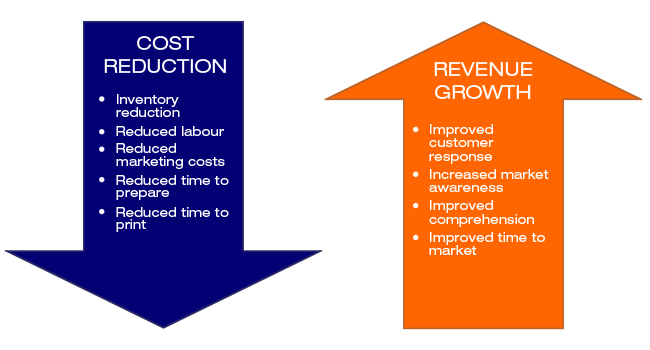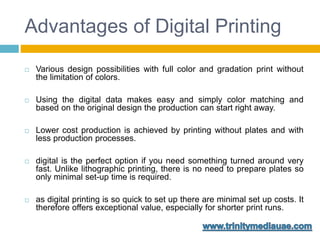The 8-Minute Rule for Digital Printing
The 8-Minute Rule for Digital Printing
Blog Article
The Best Strategy To Use For Digital Printing
Table of ContentsWhat Does Digital Printing Mean?The Ultimate Guide To Digital PrintingRumored Buzz on Digital PrintingGetting My Digital Printing To WorkThe 2-Minute Rule for Digital PrintingDigital Printing for Dummies
Variable data printing, such as straight mail with individualized codes and addresses, is ideally suited for electronic printing. Digital quick printing only requires 4 steps of style, testimonial, printing and binding to obtain whatever done. Digital quick printing has an unequaled advantage: print on demand.According to PMMI, digital printing permits brands and producers to react promptly to consumer needs while boosting the supply chain, reducing warehousing cost and waste, and enjoying faster time to market. That all sounds excellent, yet just how does this innovation do all that? The major differentiator of these modern technologies is that there are no set-up charges and no plates with electronic printing.
The Of Digital Printing
According to Wikipedia, the best difference in between digital printing and conventional approaches such as lithography, flexography, gravure, or letterpress - Digital Printing is that there is no demand to change printing plates in electronic printing, whereas in these analog printing approaches the plates are continuously replaced. This results in quicker turn-around time and reduces price when using digital printing.
Digital printing is very flexible, so it's easy to make adjustments to the bundle design promptly. It all goes back to the plates.
Much more inventory can suggest more waste in the future. With traditional printing approaches, short-run printing is just not possible. Due to the fact that a fantastic design can make or damage your product, electronic printing continually produces top notch, clear and vibrant graphics each time. Digital printing on adaptable pouches adds the intense, vibrant, and exact graphics that practically bid customers to connect and touch them.
Digital printing is the procedure of printing digital-based photos straight onto a range of media substrates. There is no need for a printing plate, unlike with offset printing. Digital files such as PDFs or desktop computer posting data can be sent directly to the electronic printing machine to publish on paper, photo paper, canvas, fabric, synthetics, cardstock and other substrates.
Digital Printing - Truths
According to PMMI, electronic printing allows brands and producers to respond swiftly to consumer needs while enhancing the supply chain, reducing warehousing expense and waste, and appreciating faster time to market. That all sounds terrific, yet exactly how does this technology do all that? The significant differentiator of these technologies is that there are no set up fees and no plates with digital printing.
According to Wikipedia, the greatest difference in between digital printing and typical techniques such as lithography, flexography, gravure, or letterpress is that there is no need to change printing plates in electronic printing, whereas in company website these analog printing approaches the plates are repetitively replaced. This results in quicker turnaround time and reduces expense when making use of electronic printing.

Not known Facts About Digital Printing
With conventional printing methods, short-run printing is simply not feasible. Due to the fact that an excellent layout can make or damage your item, digital printing continually develops high-grade, clear and vibrant graphics each time.

According to PMMI, electronic printing enables brand names and suppliers to respond quickly to consumer needs while boosting the supply chain, reducing warehousing cost and waste, and delighting in faster time to market. That all noises wonderful, yet exactly how does this modern technology do all that? The significant differentiator of these innovations is that there are no set up fees and no plates with digital printing.
The Best Guide To Digital Printing
According to Wikipedia, see here the best difference in between electronic printing and traditional methods such as lithography, flexography, gravure, or letterpress is that there is no requirement to change printing plates in electronic printing, whereas in these analog printing approaches the plates are continuously changed. This leads to quicker turnaround time and decreases price when making use of digital printing.
Digital printing is highly versatile, so it's very easy to make changes to the bundle layout promptly. It all goes back to the plates.

7 Easy Facts About Digital Printing Described
Digital printing is the process of printing digital-based photos straight onto a selection of media substrates. There is no demand for a printing plate, unlike with balanced out printing. Digital documents such as PDFs or desktop publishing documents can be sent out straight to the electronic printing press to publish on paper, picture paper, canvas, textile, synthetics, cardstock and other substrates.
Report this page